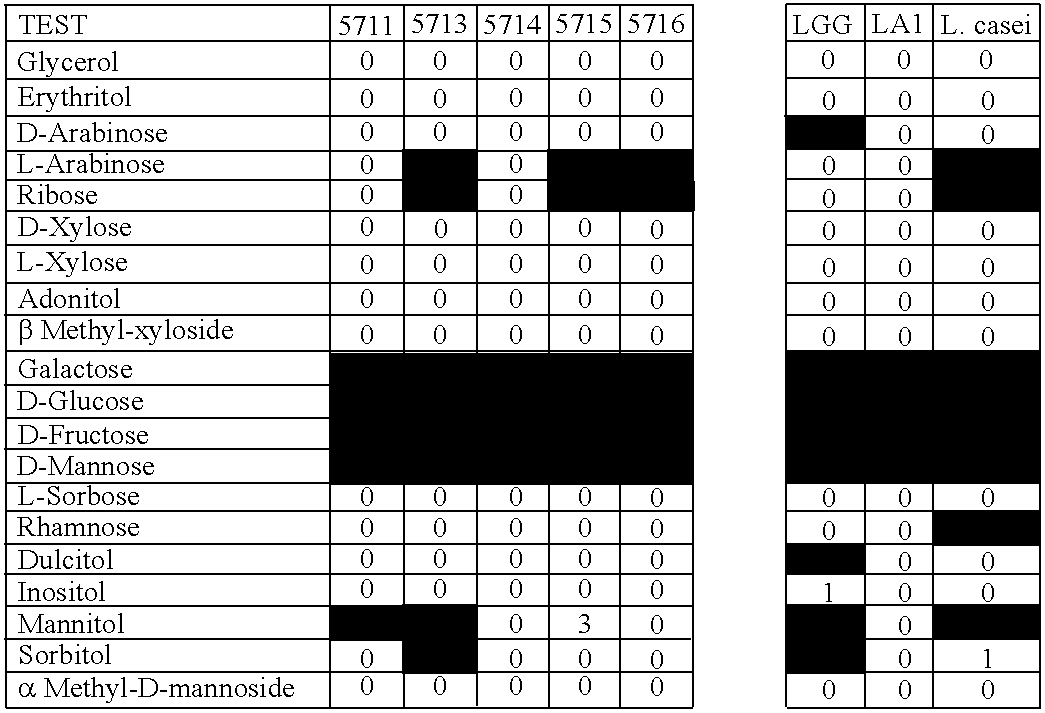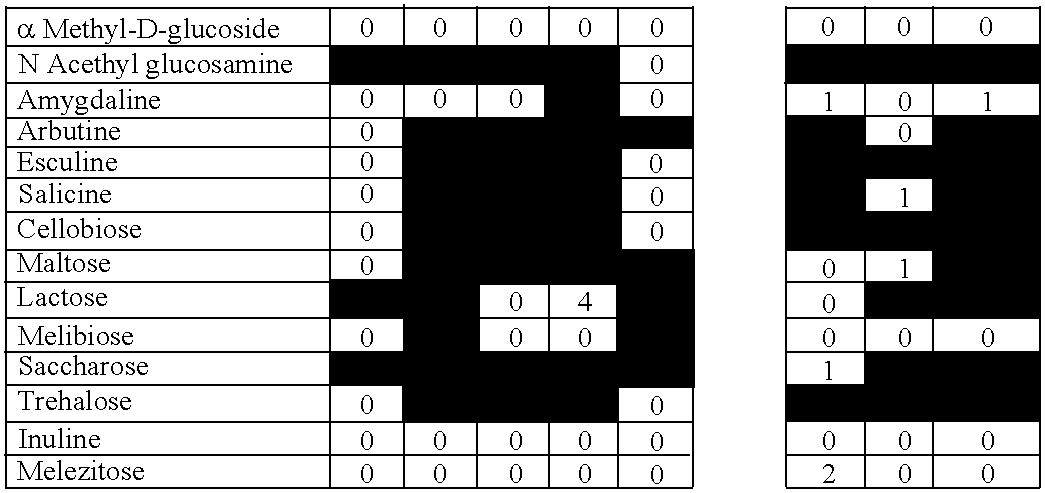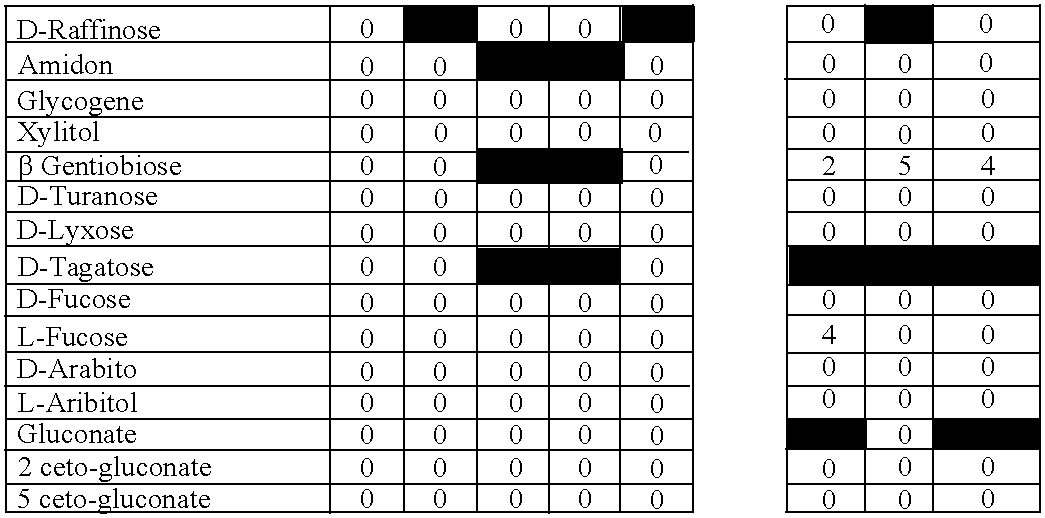Probiotic strains, a process for the selection of them, compositions thereof, and their use
a technology for probiotic strains and compositions, applied in the field of probiotic strains, a process for the selection of them, compositions thereof, and their use, can solve the problems of not being able to obtain germ-free animals, no publication or work that describes the presence of microbial strains in normal human breast milk
- Summary
- Abstract
- Description
- Claims
- Application Information
AI Technical Summary
Problems solved by technology
Method used
Image
Examples
example 1
New Method of Selection of Probiotic Strains
[0093] We have developed a novel method of selection of new bacterial strains consisting in the ability of these strains to survive in breast milk and / or amniotic fluid, and by their ability to be transferred to breast milk and / or amniotic fluid after oral intake. The rationale of this novel method described in the present invention is that ensures special characteristics of the selected strains obtained with it, since the bacterial strains obtained have implicitly most of the characteristics attributed to a potential probiotic strain, namely good resistance to digestion process and the ability of gut colonization, but also a more natural human origin, safety aspects, and the ability to colonize and regulate some human niches other than the gut. Moreover, these new strains have been obtained from different sources apart from feces, such as goat cheese and from human breast milk and amniotic fluid.
example 1a
Resistance to Human Fluids
[0094] Colonies isolated from different sources were checked by their ability to survive in human breast milk and also in human amniotic fluid. To analyze the survival rate of the probiotic strains of this invention, 108 cfu of each bacteria were cultured in 1 ml of human breast milk or human amniotic fluid for 60 minutes in anaerobic conditions at 37° C. The survival was calculated by MRS agar plating of serial dilutions and compared to the number of colonies obtained in control conditions (MRS broth pH 6.2). Plates were cultured 16-18 hours at 37° C. in anaerobic conditions. The experiment was repeated three times. Strains were considered resistant when the survival at least in one of the human fluids was higher than 75% compared with the control conditions (FIG. 1).
example 1b
Transfer to Human Fluids
[0095] The second criteria in the selection process described in the present invention is that bacteria should be able to be transferred to breast milk and / or amniotic fluid after oral intake. In order to test this capability, the putative strains were genetically labeled, as described latter, and orally administered to pregnant mice as animal model. Transfer of bacteria was analyzed by PCR screening of the colonies obtained from the amniotic fluid and from the gut of breasffed mice.
[0096] Labelinc of Bacteria:
[0097] Three primer couples were employed to obtain three different PCR fragments (F159: 159 bp, F189: 189 pb, and F228: 228 bp, respectively). The three fragments included the junction between the 35S rRNA promoter of the Cauliflower Mosaic Virus (CaMV) and the 5-enolpyruvylshikimate-3-phosphate synthase (EPSPS) gene from Agrobacterium tumefaciens. The primers were designed from the artificial sequence present in Roundup Ready soya (EMBL accession n...
PUM
| Property | Measurement | Unit |
|---|---|---|
| diameter | aaaaa | aaaaa |
| diameter | aaaaa | aaaaa |
| diameter | aaaaa | aaaaa |
Abstract
Description
Claims
Application Information
 Login to View More
Login to View More - R&D
- Intellectual Property
- Life Sciences
- Materials
- Tech Scout
- Unparalleled Data Quality
- Higher Quality Content
- 60% Fewer Hallucinations
Browse by: Latest US Patents, China's latest patents, Technical Efficacy Thesaurus, Application Domain, Technology Topic, Popular Technical Reports.
© 2025 PatSnap. All rights reserved.Legal|Privacy policy|Modern Slavery Act Transparency Statement|Sitemap|About US| Contact US: help@patsnap.com



